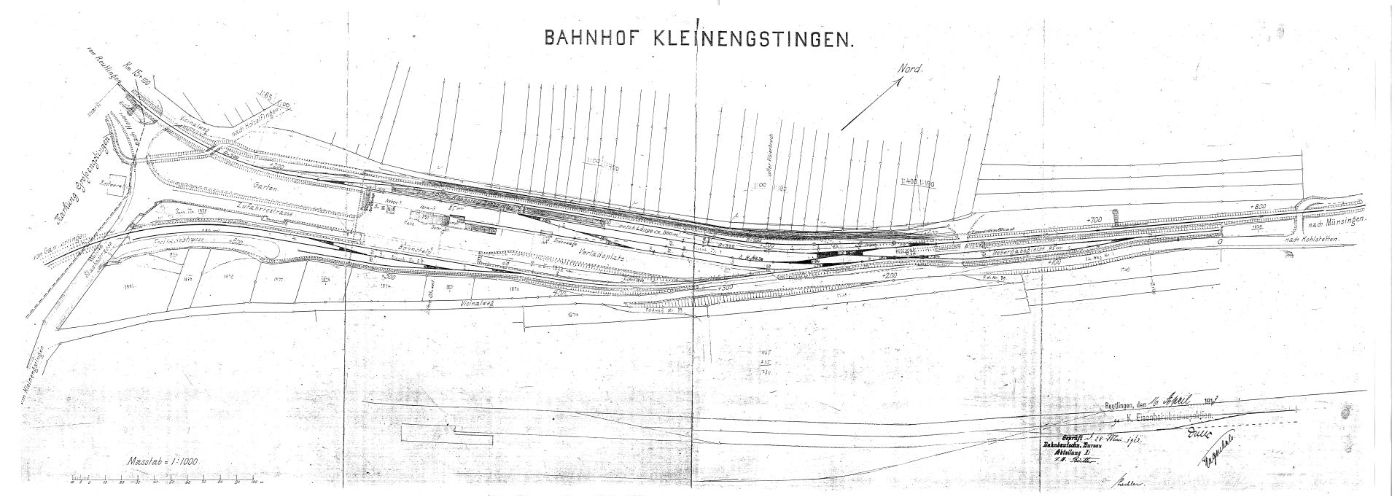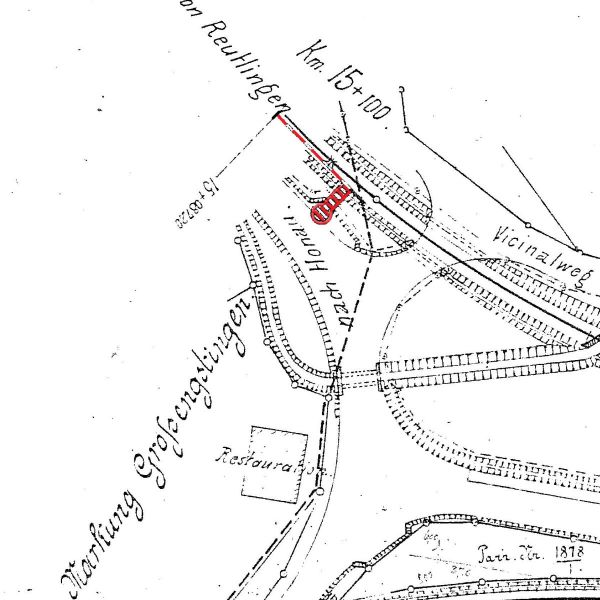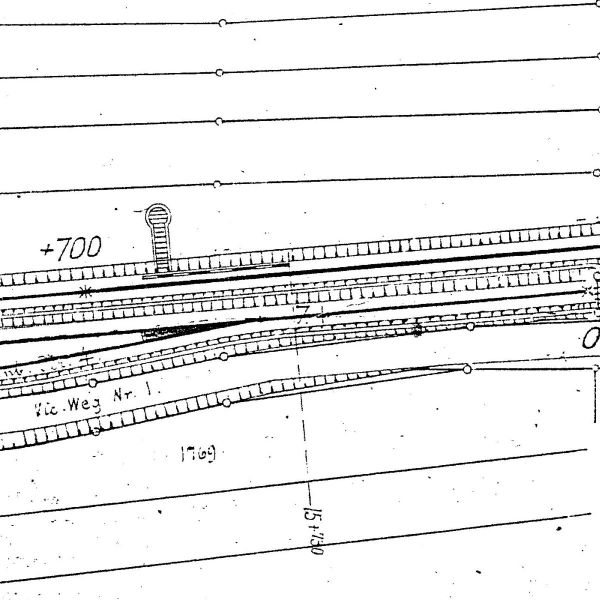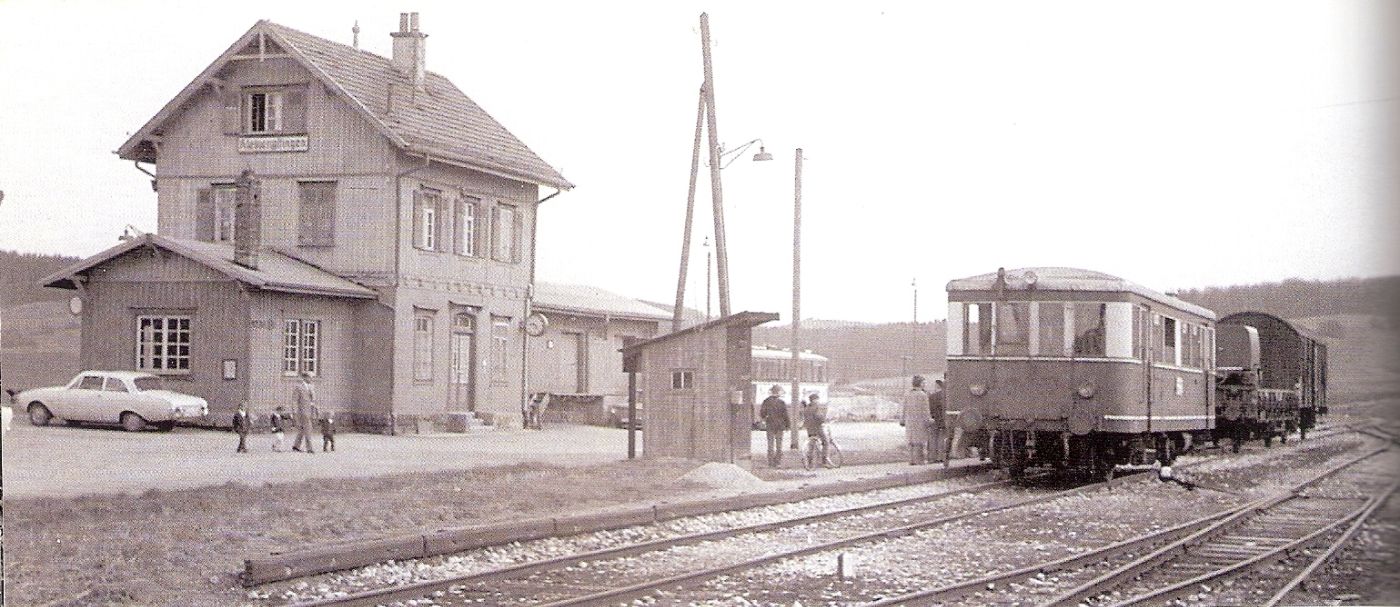
Kleinengstingen and Grossengstingen lie very close to each other. Nowadays there is no noticable separation. Grossengstingen was tradionally Catholic and Kleinengstingen Protestant. This makes it easy to tell them apart in photos. Grossengstingen church has the barock ‘onion’ steeple whereas Kleinenstingen the more frugal ‘spitz’.
The following series of photos shows the demise of the station in the latter part of the 20th century.
It starts in the 1960s when the line was already falling into ruin. The pictures may, however, give some indication of the positioning of buildings, track, etc. which might be useful when modeling the composition.
The track (and trains) from the DRG came in onto a platform north of the station building. The trains from the HzL came in on the rough road behind the station, to the east. The HzL line came in between the station building and goods depot/WLZ.
The next set of pictures I presume to be from the 1970s after the line from Reutlingen was closed.
The final set of photographs are from 2015 showing the current situation at Kleinengstingen.
A bit of detail of the points is shown. There are a few "Rückfallweichen", known as “spring switches” which return to their default state once a train has past.
The area is now so built up and the station so run down that it is nothing like it’s hay-days in the 1920s and 30s.
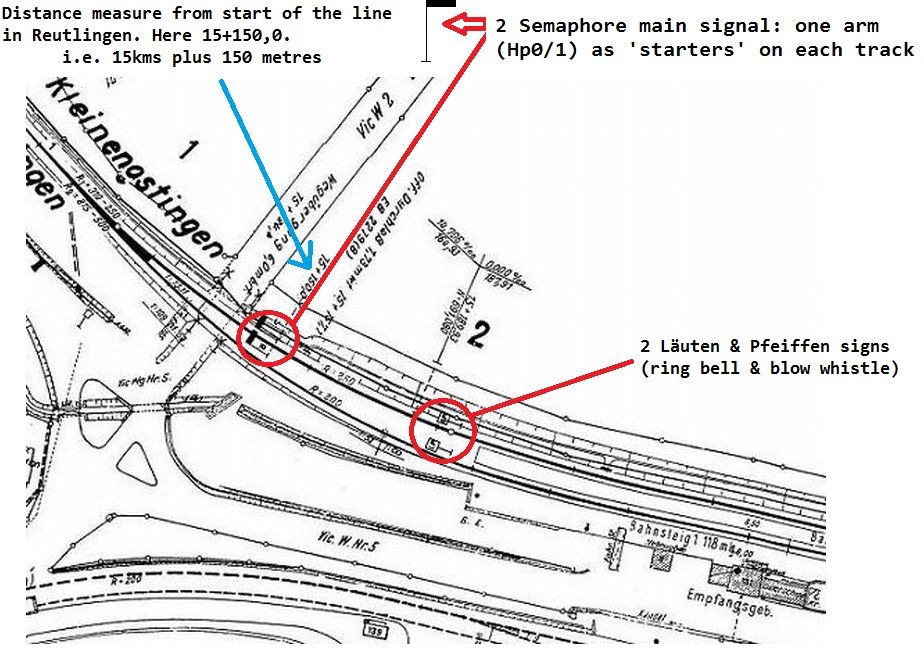
Some more detail from the original 1930s plan showing the positions of the distance markers and signals at the western end of the station platforms.
